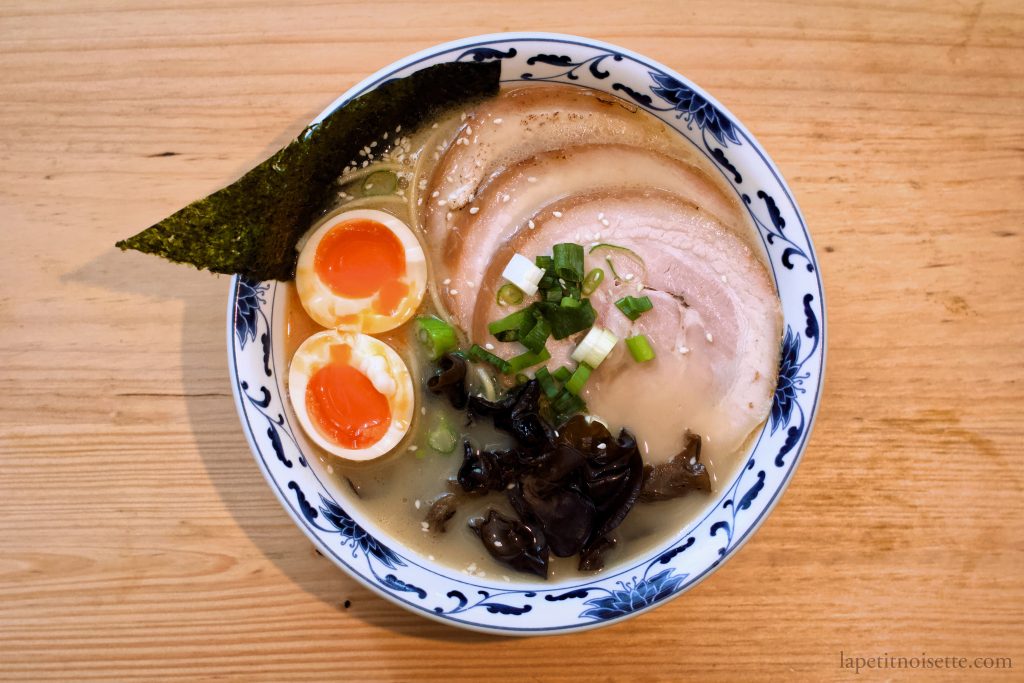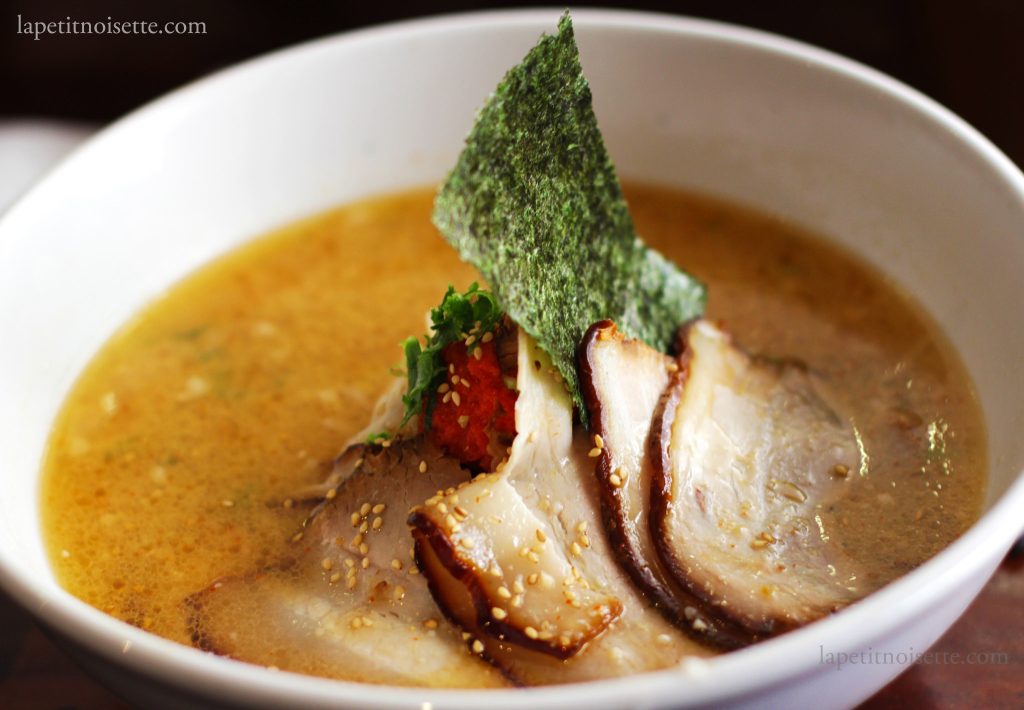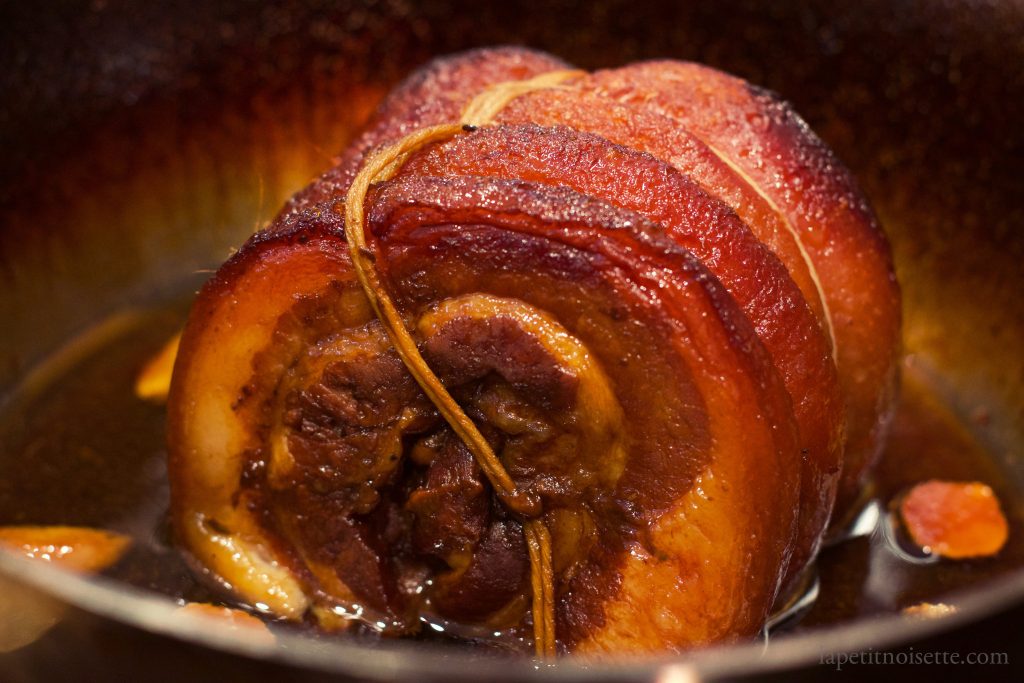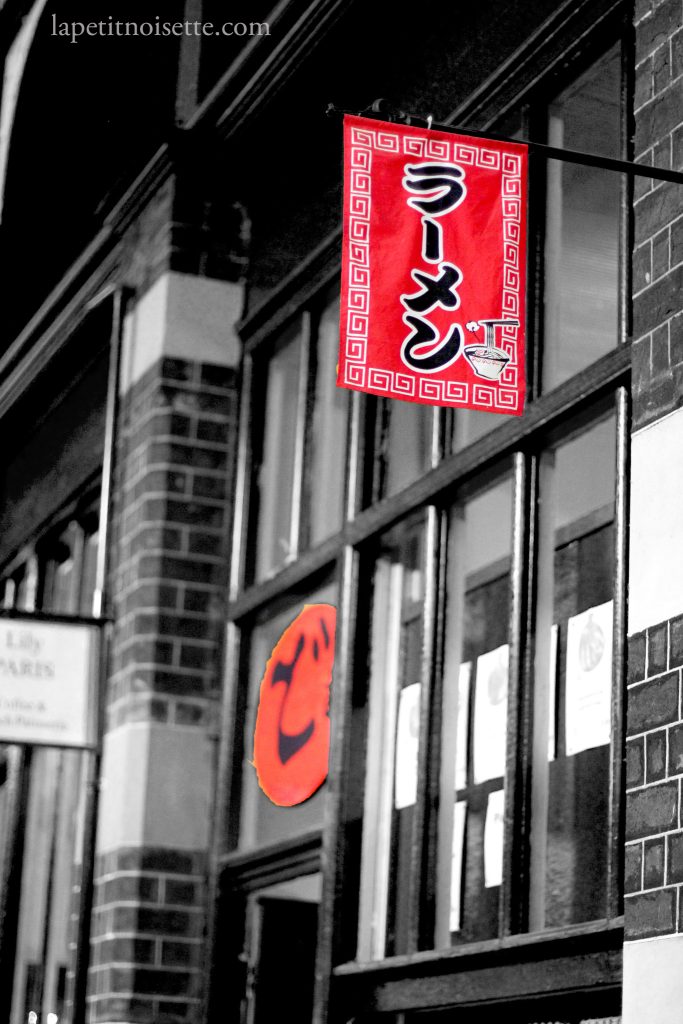久留米ラーメン
For information on the science behind making ramen noodles, look here.

Whenever I meet up with an old friend that I haven’t seen in a long time, we never catch up on each other’s lives over a cup of expresso in a dimly lit chic cafe, instead I’d much rather reminiscence the good old days over a piping hot bowl of ramen with a pint of beer. In my books, nothing beats sinking my teeth into a melt-in-your-mouth thinly sliced piece of chashu, slurping up the hot noodles from the lip smacking fatty soup, before washing it down with a swing of beer. This of course, follows with the mandatory noodle top up to go with the remaining broth! This system of having a second helping of noodles is known as Kaedama (替玉). My personal favourite ramen is Tonkotsu ramen, with it’s creamy pale white broth. While some people may find it a little too heavy compared to Shio ramen (salt based) or Shoyu ramen (soy sauce based), a well made Tonkotsu broth, contrary to the general conception, is not extremely fatty, but broth that balances collagen, gelatin and fat.
The recipe that follows is my take on Kurume Tonkotsu Ramen which originates from Fukuoka, a Prefecture on the Kyushu island of Japan, which is known to be the original Tonkotsu Ramen and thus the most authentic. Fukuoka is definately known as the capital of Tonkotsu Ramen in the world and here, it comes in three distinct styles, Nagahama, Kurume and Hakata. Kurume style tonkotsu is boiled longer than the other two styles and the resulting broth is so rich that it doesn’t require the addition of fat at the end. Historically, Kurume style ramen is also different as the previous day’s excess stock is added to the next day, in the same way traiditonal unagi shop’s sauce pot is never emptied.
This recipe is definitely for the love of labour as I have tried to make it as close to the original as possible. The characteristic creamy colour of the Tonkotsu broth comes from an emulsion of rendered fat, collagen and gelatin, whereby the gelatin acts as a surfactant that emulsifies the fat. This is made by vigorously boiling down pork bones for a long period of time. In addition to this, the main ingredient that sets apart the original Kurume Tonkotsu Ramen from other Tonkotsu Ramens found around the world is their use of entire pig skulls in the broth. This is because by boiling down pig skulls, the the brains and eyes are rendered down and dissolve into the broth, giving the broth a uniquely delicate sweetness to it as well as an umami boost (similar to the addition of prawn heads to shellfish stock).

Before I go into the details of making the broth. We first must talk about what makes a bowl of ramen. A bowl of ramen has 4 primary components, the noodles, the tare, the broth and the toppings. All 4 of these components play an important role in making up an authentic bowl of ramen but in my opinion, the broth is by far the most important as it serves as the base flavour on which the chef is able to layer other flavours onto, like a painter on a sheet of canvas. While the broth may be the most important, let me first elaborate about the tare of a ramen, which in my opinion is the hardly ever discussed, yet alone mentioned, even when it is one of the primary components. The tare is the base seasoning added to the broth to add saltiness and complexity to the dish. It usually consists of a concentrated salty liquid that is added to the broth at around a 1:10 ratio of tare to broth. Tare can be made from concentrated dashi, soy sauce, and salt. In the case of Shio ramen, the tare used is dry and in the very best restaurants is made from several different kinds of salts to give a complex flavour compared to using plain salt.
The noodles used in Japanese ramen also originates from China and similarly, they have an alkaline element added to it. This gives them their unique taste but more importantly a different mouth feel. For example, most industrial ramen makers use kansui, or lye water, to give the noodle’s its bounce. This is in contrast to french pâtisserie, which ocassionally uses Ascorbic acid to increase the bounciness of their pastry.
Ramen noodles in Japan are usually made without egg, with their yellow color comming from the kansui as well. Kurume ramen noodles are traditionally eaten with a hard centre, similiar to ‘al dente’ in Italian cooking. Because of this, a bowl of ramen should be eaten as soon as its served, in order to prevent the noodles from becoming soggy. Kurume ramen is traditionally paired with thin, straight noodles compared to the instant ramen noodles which are curly. In my opinion, the pairing of straight noodles with Kurume ramen works well as the straight noodles stick together and the soup clings more onto them.
For the topping, the classic toppings are pork chashu, marinated eggs, naruto (fish cake), bamboo shoots, chopped green onions, sesame seeds, mayu (black garlic oil), black woodear fungus, and a sheet of seaweed.

For this broth, I use purely pig’s trotters, skulls and water (filtered if possible). The reasoning behind this is to obtain the purest flavour of pork. The secret to making an amazing tasting Kurume Tonkotsu Ramen is the use of pig skulls in the recipe, whereby the brains and eyes melt into the broth, giving a subtle sweetness to the broth, similar to tomalley in crabs. From my experience, any addition of aromatic vegetables such as onions, garlic or ginger overpowers the soup, making it more similar to Chinese soups. For the same reason, I have also chosen not to add any chicken bones to prevent the underlying taste of chicken being added to the broth. Other than tasty, food should also be aesthetically pleasing. Tonkotsu ramen would not be Tonkotsu ramen without being an extremely pale cream colour. As mentioned above, this pale white colour is an emulsification of collagen and fat that is extracted from the bones by using a vigorous boil. This technique is very different from classic french stock which have to be as clear as possible and therefore never raised above a gentle simmer. In contrast to this, a Tonkotsu broth can not be made by simmering the pork bones as you would not get an opaque white soup due to the lack of emulsification. The vigorous boiling of the bones is akin to the vigorous whisking required to make a successful hollandaise sauce, creating a fine suspension of hydrophobic particles in water. As with most stocks and stews, extracting flavour requires a long period of boiling. This process is even longer when making this broth as the collagen in the bones requires a long period of boiling before it renders into the soup. From my experience, 20 hours is optimal, with any longer being a waste of time and any shorter causing the broth to be slightly too watery. This is especially so for Hakata Tonkotsu broth which requires a Brix scale of 10.1 or above. The Brix scale is a measurement of the sugar content of an aqueous solution, which can be measured with a Brix refractometer. Of course this is used only by the most meticulous ramen enthusiast.
Another problem typically faced when making the broth is the broth taking on a brownish tinge which gets darker over time. This occurs as the broth slowly oxidize over time. The component of the broth that is liable to oxidise is blood, and therefore as much blood as possible needs to be removed before the initial boil. Two methods are available to use to do this, the first being soaking the bones for 24 hours prior to cooking and the second one is the blanch the bones in hot water before washing the bones carefully in cold water. Since we are using pig skulls, I recommend using both technique as the skulls are full of dirt and grit (unless you are buying commercially prepared pig skulls). In fact, rather than mere blanching the pigs skulls after soaking, I recommend boiling them for up to an hour to make sure they are thoroughly cleaned. Any longer than one hour and the brain starts to melt and flow out of the skull, something that we want to prevent as we want as much of the brains to go into our broth.

Kurume Tonkotsu Ramen 久留米ラーメン
- Broth
- Pork Skulls with brains in tact (preferably with the eyes too)
- Pigs Trotters
- Water (filtered if possible)
- Tare
- 5g Katsuobushi- Dried Bonito Flakes (鰹節)
- 10g Kombu (dried kelp)
- Water
- 10g Niboshi (煮干し)
- 25ml Mirin
- 50ml Sake
- Pork Lard
- Fine Sea Salt
- To start the broth we must first drain all the blood from the skulls and trotters. Soak the skulls and trotters in water overnight before boiling them for half an hour.
- Discard the water and wash the skulls and trotters to remove all the blood which should now be brown and clumped together.
- Place skulls and trotters in a large stock pot, cover with water and place the lid on before bringing to a rolling boil for 20 hours.
- Remember to constantly refill the water if your lid is not tight-fitting and please do not leave the stove on overnight. It is not necessary to leave the pot on a rolling boil for all the 20 hours, but the more hours the better. It is still alright to start with a rolling boil while you are able to monitor the pot every hour and to lower the pot to a simmer when you need to leave for longer periods of time.
- Around the 10 hour mark, it is useful to try and break open the skulls to extract the brain if the bones are soft enough. You might want to also remove the skulls from the pot and break them open a cleaver before putting them back in the pot.
- After 20 hours, the broth is done. Strain the stock and discard the trotters, skulls, and any remaining bone fragments. The broth can be frozen for up to 3 months.
- To make the Tare, we start with a dashi base. Dashi is basically the Japanese version of stock and is either made from Kombu which makes a type of vegetable stock, or Katsuobushi which makes a type of fish stock. Dashi is unique because it has extremely high levels of glutamate which is the compound which gives us the umami sensation. This is because when Katsuobushi is made by smoking fresh skipjack tuna fillets, the glutamate in the fish concentrates. Dried Kombu and Katsuobushi are two of the food with have the highest naturally occurring glutamate, which combined together, form an umami bomb.
- To start, soak the Kombu at room temperature water overnight to let it infuse slowly into the water. Do not wash the Kombu before soaking as you will wash off some of the Mannit, which is the white powder found on dried Kombu. Mannit contains a lot of glutamate which we do not want to lose.
- Separately, render the down the pork lard into liquid form before frying the Niboshi in it. Reserve pork lard and separate the Niboshi. The pork lard can be used as an additional topping to the ramen.
- Place the Kombu and the soaking liquid in a saucepan and heat until the mixture reaches 80°C (176°F). If you heat the Kombu above this temperature, the Kombu will start to release bitter compounds which will ruin the dashi. After years of making dashi, The Japanese have determined 80°C is the most optimal temperature for making dashi as it causes the most flavour extraction in the quickest time without the extration of bitter compounds.
- When it has reached 80°C, immediately take it off the heat and add in the Katsuoboshi and fried Niboshi and let it infuse for around 15 minutes.
- After that, strain the dashi to remove the solids and add in Mirin to taste. Now add in a dash of Sake and bring it back to a boil to reduce it down until concentrated.
- After reducing, the dashi (now tare) should be very concentrated in an ocean-like taste but not extremely salty.
- The final step now is to increase the salt level with sea salt, adding quite a bit of sea salt to the tare until it is almost unbearably salty. The reason why we add so much salt to the tare is because the broth has no seasoning in it and thus we want to use the tare as seasoning. However we want the fish taste from the tare to just be a complementary background taste and not full forward. In order to do so, we need an extremely salty tare that when diluted in small amounts, is enough to season the broth and add provide subtle fish notes.
To make a bowl of ramen, mix the tare to broth in a 1:10 ratio, before adding the toppings (such as chashu) and noodles. Serve immediately.
All the foods you’ve posted are all perfect. I love Japanese food.
Thank you!!
You’re recipies are so well written and look so beautiful. I LOVE a good bowl of ramen!
Thank you for the article. Very well-written. There is a typo in the article though. Should be Tonkotsu and not Tonkatsu Ramen. Your title is correct though ;o)
Thank you!
[…] 3. Kurume Ramen […]